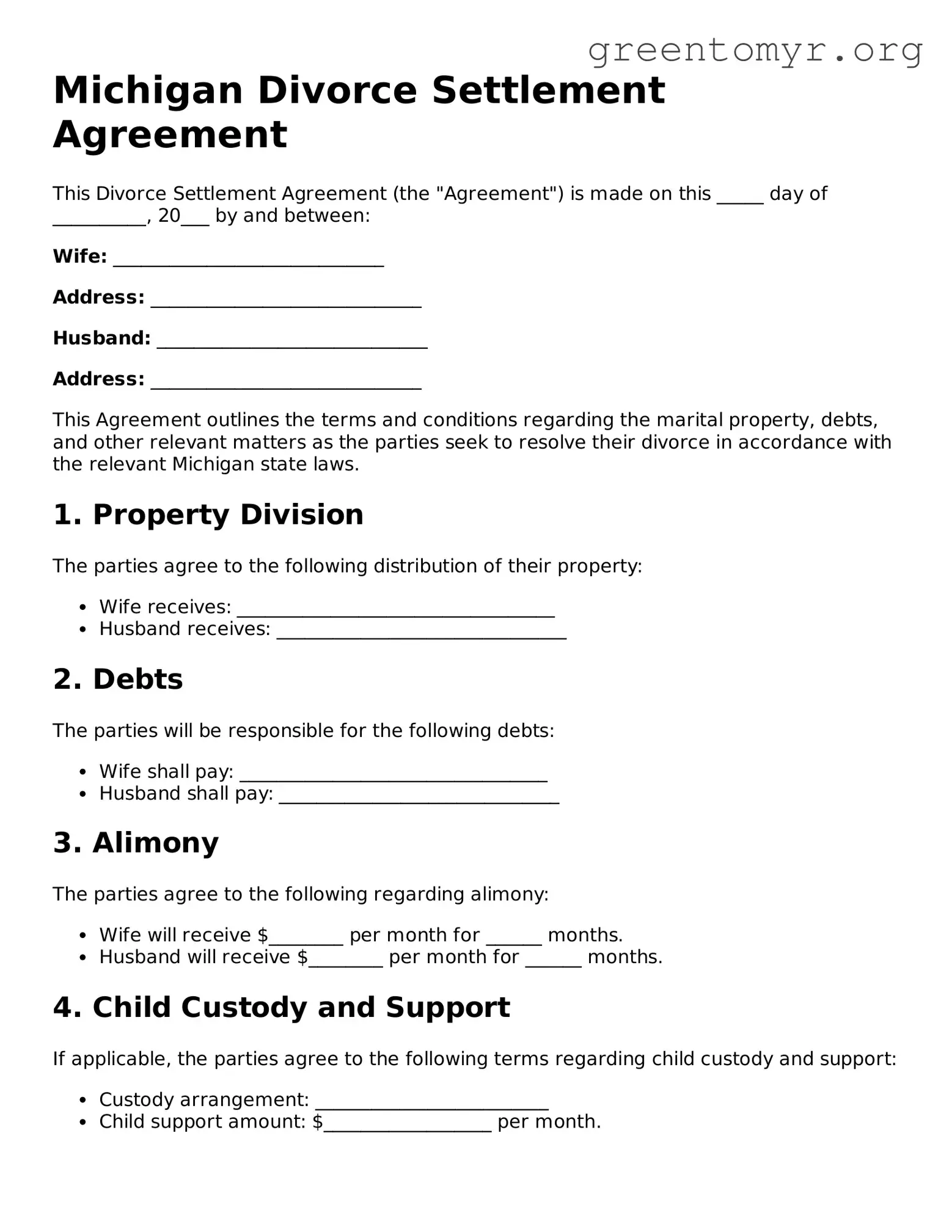Michigan Divorce Settlement Agreement
This Divorce Settlement Agreement (the "Agreement") is made on this _____ day of __________, 20___ by and between:
Wife: _____________________________
Address: _____________________________
Husband: _____________________________
Address: _____________________________
This Agreement outlines the terms and conditions regarding the marital property, debts, and other relevant matters as the parties seek to resolve their divorce in accordance with the relevant Michigan state laws.
1. Property Division
The parties agree to the following distribution of their property:
- Wife receives: __________________________________
- Husband receives: _______________________________
2. Debts
The parties will be responsible for the following debts:
- Wife shall pay: _________________________________
- Husband shall pay: ______________________________
3. Alimony
The parties agree to the following regarding alimony:
- Wife will receive $________ per month for ______ months.
- Husband will receive $________ per month for ______ months.
4. Child Custody and Support
If applicable, the parties agree to the following terms regarding child custody and support:
- Custody arrangement: _________________________
- Child support amount: $__________________ per month.
5. Miscellaneous Provisions
The following terms and conditions are also agreed upon:
- A mutual release from any further claims or obligations.
- The Agreement shall be binding upon the parties.
6. Signatures
All parties agree to the terms of this Agreement.
Wife's Signature: ______________________________ Date: ___________
Husband's Signature: __________________________ Date: ___________
